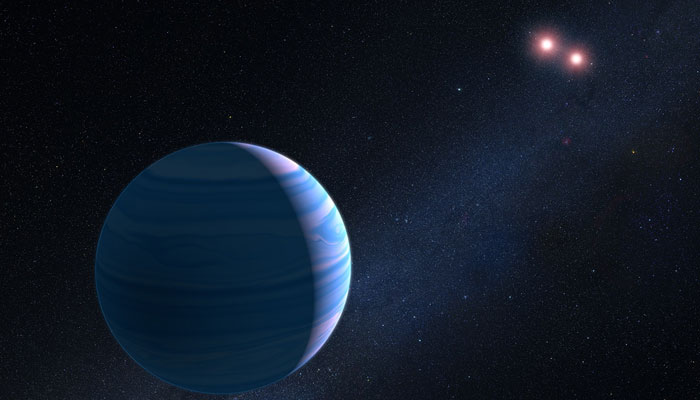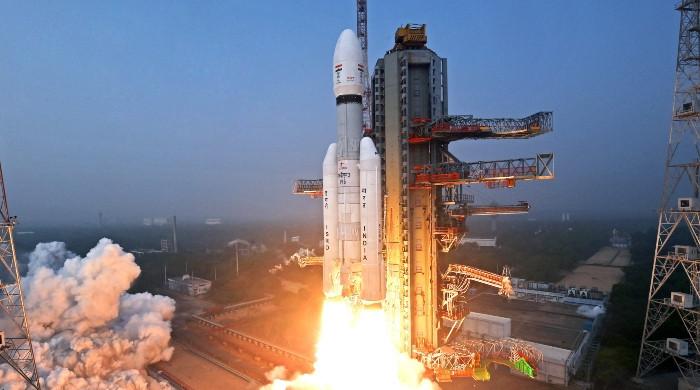Astronomers spot exoplanet that ‘survived violent transformation’
Experts say "Halla somehow survived after its star experienced a transition that should have destroyed nearby planets"
June 30, 2023

Astronomers have identified an exoplanet which has surprisingly survived the violent transformation of its hot star — larger than our sun which was being fuelled by a supply of helium after running out of hydrogen.
The new insights about the planet 8 UMi-b and named Halla after its first discovery — a gaseous Jupiter-like — were published in the journal Nature. It is located at a distance of 520 light-years from Earth and was first discovered in 2015 by astronomers from Korea.
Its orbiting star is named Baekdu, located in the Ursa Minor, or “Little Bear,” constellation. Its planet revolves around it about half the distance compared between the Earth and the sun — 0.46 astronomical units, or 42,759,659 miles (68,815,020 kilometres), according to CNN.
Halla is regarded as a “hot Jupiter,” a category for exoplanets similar in size to Jupiter with higher temperatures given how closely they orbit their host stars.
According to astronomers’ estimation, Halla somehow survived after its star experienced a transition that should have destroyed nearby planets.
Scientists carried out observation of Baekdu with the help of Nasa’s Transiting Exoplanet Survey Satellite.
The team found that the star ran out of hydrogen and is being supplied with helium at its core, suggesting them that it once expanded into a red giant star.
“Engulfment by a star normally has catastrophic consequences for close orbiting planets. When we realised that Halla had managed to survive in the immediate vicinity of its giant star, it was a complete surprise,” said study coauthor Dr Dan Huber, associate professor at the Institute for Astronomy of the University of Hawaii at Manoa.
“As it exhausted its core hydrogen fuel, the star would have inflated up to 1.5 times the planet’s current orbital distance — engulfing it completely in the process — before shrinking to its current size.”
Compelling question
It is anticipated that our sun is to reach its end of life in 5 billion years and will expand to 100 times its size, likely engulfing and obliterating planets in our solar system.
As our solar system has only one star, there are other stars existing with a companion star. Scientists are aiming to discover the fate of such systems and their orbital planets.
The team also conducted a follow-up observation in 2021 and 2022 on the star after realizing it likely inflated up from its current size.
The scientists found that the orbit of the planet remained stable for more than a decade — which takes 93 Earth days to complete.
Dr Marc Hon, astronomer and lead author of the study, said: "Together, these observations confirmed the existence of Halla, leaving us with the compelling question of how the planet survived," adding that "the observations from multiple telescopes on Maunakea were critical in this process."
Now, astronomers are trying to determine if it’s possible that the planet could withstand such a cataclysmic stellar event.
Scientists believe that these kind of planets initially orbit at a distance and then move closer to their star, but scientists say this may not be the case with Halla.
“We just don’t think Halla could have survived being absorbed by an expanding red giant star,” Huber said.
It’s entirely possible that Halla never faced any danger, to begin with, researchers said.
“The system was more likely similar to the famous fictional planet Tatooine from Star Wars, which orbits two suns,” said coauthor Tim Bedding, an astronomer and professor at the University of Sydney.
“If the Baekdu system originally consisted of two stars, their merger could have prevented any one of them from expanding sufficiently to engulf the planet.”
Experts also said that it is also a possibility that Halla is a young planet born from a gas cloud, created by a collision of two stars, making it a second-generation planet created in the system.









